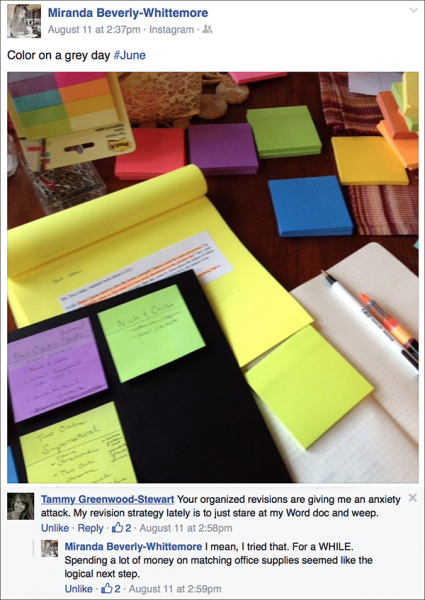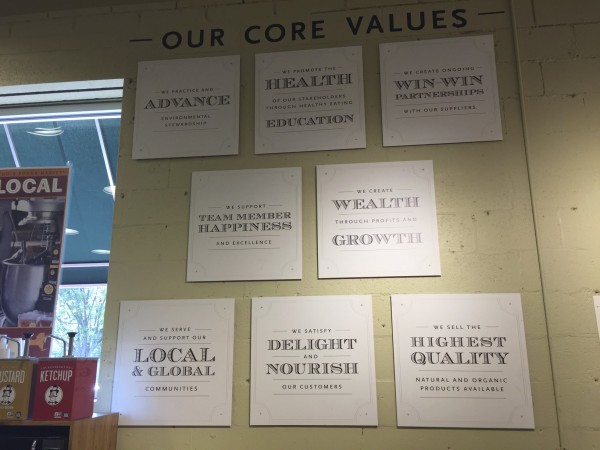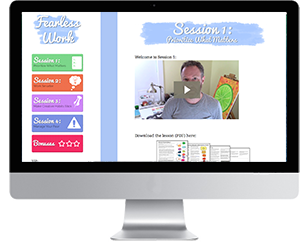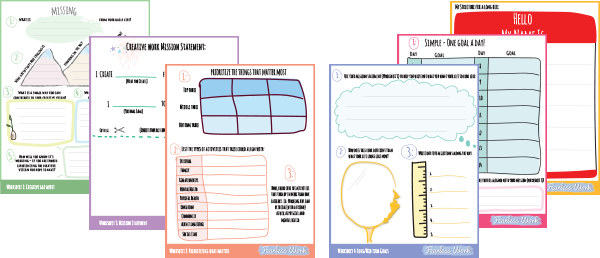So my team and I have been trying to figure out how to use Facebook ads effectively, and this past week, we gave up. But perhaps not for the reason you think.
YES, we did find it difficult to identify a campaign that met our goals. I have been studying others doing a similar thing, including Bryan Harris’ public Facebook ad strategy. Bryan is really smart, and has been working at this again and again to solve it. And he is frustrated with it. Now, I know he will keep at it, and in doing so, work through the challenge to reach his goal. But looking at the scale of his effort and how many challenges he is working through is not motivating me to try harder!
But the other big reason we are giving up on Facebook ads? It’s just not my voice. I have been studying Facebook ads, and I tend to find that they over-promise easy success, six-figure sales, and loads of free resources. The voice in which most of these ads are communicated is vastly different from the voice I try to craft with my audience.
I don’t want to show you specific examples (I have loads of screenshots), because it is not my goal to “call people out,” on sales tactics that don’t resonate with me. Those tactics work for those people, which makes me happy for them. But it’s not the tone I want to set for WeGrowMedia.
In this process, my team of Diane and Leah and I have lots of conversations around not just WHAT we want, but HOW we want to achieve it.
What is the voice of WeGrowMedia? Who do I love working with? How do I like working with them? What kinds of breakthroughs do they have when we work together? Why? These sorts of questions.
I was reminded of this while listening to a review of the movie Mad Max: Fury Road. The point that was made is how simple and linear the movie is. The “what” of it is: drive on this road. Drive back. That is the entire movie. Did I spoil it for you? NO! Because it is the experience of the movie — the HOW of the storytelling — that makes the movie as incredible as it is. By the way, the movie is incredible. (This is the review, but with a warning: it contains lots of curses and movie spoilers.)
So as you seek out ways to develop your body of work — to grow your audience — you have choices not just around WHAT you do, but HOW you do it.
Your voice directs the actions that you take.
News Flash: Creative Work is Difficult
This week I saw some photos shared by my friend, novelist Miranda Beverly-Whittemore. She is working on revisions on her next novel, and posted this status update:

When Miranda shared a photos of her revision process, fellow novelist and friend Tammy Greenwood chimed in:

It reminded me of something I have been thinking a lot about, which is success is difficult. Especially in creative fields.
Now, you may be saying, “Duh, Dan. Of course it is.” But recently, I have been surveying loads of course offerings and webinars that people are selling. The core messages I keep seeing again and again are:
- It’s easier than you think.
- I have the secret.
- Sign up here.
People are literally saying this, including people I respect. They promise big success, huge sales, huge earnings, a big audience, and present it as “easy.”
I can tell you, it’s not. Success as a creative professional is difficult. Perhaps more so than you think.
Let’s go back to Miranda from above. She has spent more than a year writing and editing this novel, and is still now saying, “This is difficult. Revision is difficult.” Miranda, more so than many other authors, is living the dream:
- She is a New York Times Bestselling author, with 3 previously published books.
- She has been a professional author for more than 10 years.
- She writes full time, and has an incredibly supportive family who not only work hard to give her time and space to write, but are wonderful sounding boards for her works in progress. Like, her family is amazing on so many levels. (Hi, Miranda’s family.)
- Her new book is being published by the same house (Crown) who published her last one, and they were incredibly supportive of her.
- Her editor is, well, the woman who edited Gone Girl. Yes, that Gone Girl. Millions and millions of copies sold Gone Girl.
- Miranda is confident, she has a system by which she writes, and is disciplined about it.
And yet, it’s difficult. I wrote about Miranda’s journey with her latest novel back in May. Why am I providing yet another update? Because this is the stuff we gloss over. Next year, when her novel June is released, you may have a vague memory of her last book having done well, and hopefully, you will be hearing about how June is doing well. But in between those two milestones was an incredible amount of hard work, frustration, confusion, and grit.
The “Easy” Sell
I share Miranda’s story because it illustrates why I bristle when I see people offering sales pitches for courses that say things such as, “Find success twice as quickly, with very little effort, and have huge sales!”
I mean, can you imagine walking up to a successful musician, artist, author, or designer, and asking them about their road to success, and them saying, “Actually Dan, it was way easier than I thought it would be. It happened really fast, even as I spent less and less time working on it.”
As someone who offers courses to creative professionals, I have found myself tempted to make it all sound so easy because that is what people want to hear.
But it isn’t. It’s difficult. It takes discipline. It forces you to confront so many aspects of your identity, your boundaries, your goals. You have to negotiate with everyone in your life, catch a bunch of lucky breaks, and even then, 1,000 things can still get in the way.
Does that mean there aren’t strategies and tactics by which to follow? Of course not. That IS what is in my courses. In a course I’m running right now, students are reporting incredible milestones that they are reaching.
So often, success seems to elude us. As we observe others and gain experience, we begin to discover what works.
And all through this process, we have to make decisions about HOW we want to achieve success. That our voice and the voice of those we want to reach is the core connecting factor.
What has your experience been in finding success with your creative work?
Thanks.
-Dan



